You might get familiar with many gorgeous images of Vietnam’s sceneries with blue beaches, epic mountains and luxurious cruise with modern services. But have you ever wanted to see Vietnam from a whole new perspective, like an Ancient Vietnam? If you have, let’s take a look at these places to find out if this will is able to surprise you.
Northern Vietnam
Duong Lam Ancient Village
Duong Lam ancient village is located 44 km west of the center of Hanoi, in Son Tay town, Hanoi. This is one of the very few village that holds the artifacts and evidence of time.
You might be amazed to notice that Duong Lam village contains houses that are over 300 years old. This place is also known as the land of two kings because it was the birthplace of Phung Hung and Ngo Quyen.
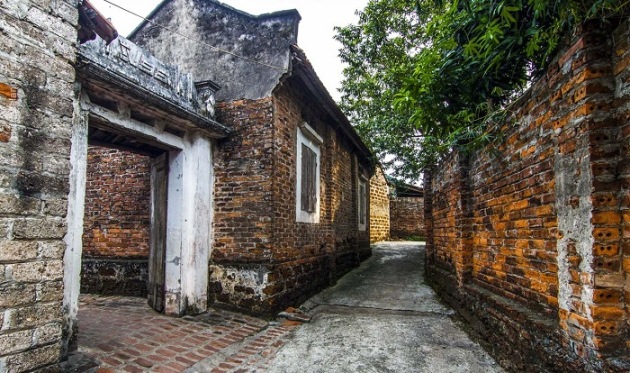
TIP: Visitors can go to Duong Lam ancient village at any time of the year, but if you come here in the September, which is supposed to be rice-harvesting season, you will see more straw-covered village roads with gorgeously golden yellow, allowing you to take pictures and enjoy the fragrant smell of the rice.
Coming here, you should pay a visit to at least one family house, especially one of these two: Mrs. Dien’s old house, which is 200 years old, with 3 rooms in the style of the old Northern architecture, which is the altar is placed in the middle facing the door, the yard is the area to place the flowers and the old wine jars or Mr. Hung’s house, considered to be the oldest house in Mong Phu village, which was built since 1649.
You can also witness the communal house built 380 years ago, 1800 square metres wide. Inside the communal house, there are many outstanding diaphragm hanging, all of which represent many unique architectural and cultural values, attracting tourists.
NOTE: “Che lam” and “tuong gao“ (rice sauce) are the 2 traditional and long-lasting specialties you will not want to miss when coming here.
The Hanoi Old Quarter
Hanoi Old Quarter is the common name for a long-standing urban area of Hanoi located outside the Imperial Citadel of Thang Long. This urban area concentrates on people working in small industries and handicrafts and trading, forming typical trade streets, bringing the distinct traditions of urban dwellers and capital.
According to historical records, the old town was formed in the 11th century, during the Ly – Tran dynasty. At that time, this area was considered to be the busiest in the capital city of Thang Long with trading activities. Therefore, The Old Quarter is mostly concentrated among the middle and upper class people in society. In particular, the old town is also known for famous traditional craft streets.
Today, Hanoi Old Quarter is an attractive destination for those who want to have more insights into the culture and people of Hanoi. It is now in the area of 36 streets belongs to Hoan Kiem district with more than 76 streets in 10 wards, including Hang Dao, Hang Bac, Hang Buom, Hang Bo, Hang Bong, Hang Gai, Hang Ma, Dong Xuan, Cua Dong, Ly Thai To.
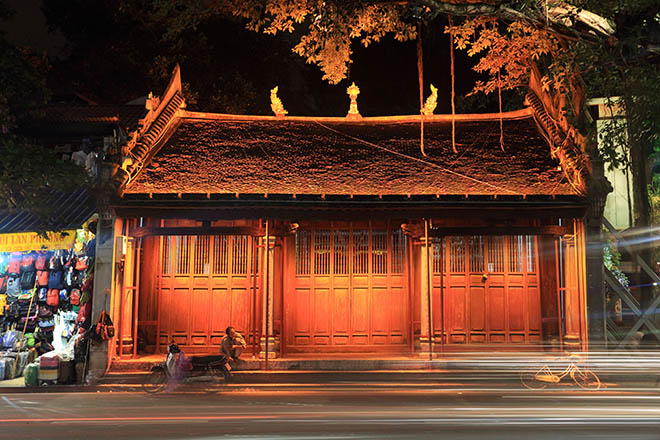
Where to visit in Hanoi Old Quarter?
- Hoan Kiem lake: this is associated with the legend of the God of Sword. Hoan Kiem Lake is located in the city center, which attracts a lot of domestic and foreign tourists. Next to the lake, there are many other tourist attractions: Ngoc Son Temple, Thap But, The Huc bridge.
Coming here and strolling around the lake is a very interesting experience, you can come across each destination on the way, and that’s how you can both finish one circle around the lake and visit almost all popular destinations.
- Dong Xuan market: this is one of the largest markets in Hanoi and also the largest market in Hanoi’s old quarter, which was built during the 19th century. There are a lot of merchandise sold here from food to housewares and you definitely don’t have to buy anything if you just want to come here to explore one of the ancient stops in Hanoi.
- Ancient house at Ma May street: As one of the attractive places to visit in the old town, the old house at 87 Ma May street is a kind of traditional house that recreates the living space, characteristic of the ancient Hanoi people. The house is open regularly for tourists to visit, the entrance fee is around 10,000 VND.
- O Quan Chuong: One of the five remaining gates of the ancient Thang Long citadel, designed in the style of gazebo – a typical architecture of the Nguyen Dynasty. The name of the gate is given by the people to remember the merits and heroic sacrifices of the Grand Chancellor during the fight against French period.
Besides the attractive places to visit, Hanoi Old Quarter is also known as a dining paradise. You should also not miss enjoying the unique delicious food in Hanoi Old Quarter and a delicious, cheap dining address. You can try egg coffee, bun cha, Vietnamese sandwich and many other types of food.
Hoa Lu Ancient Capital (in Ninh Binh province)
Hoa Lu was the first capital of Dai Co Viet (a name of Vietnam in 1010, when the country was unified) as well as the capital of the Dinh, Tien Le and Ly dynasties. After moving the capital to Thang Long (Hanoi), this place became the ancient capital. Although the kings did not station in Ninh Binh anymore, they still renovated and built more architectural works here such as pagodas, palaces, communal houses and tombs.
It is an architectural complex, and each architecture has its own characteristics, all making the ancient and majestic beauty of ancient historical sites. The vestiges – history still remain in the diverse and rich complex of monuments, including the walls, citadel, caves, temples, tombs and many other valuable architectural works that have been contributing to high historical and cultural values.
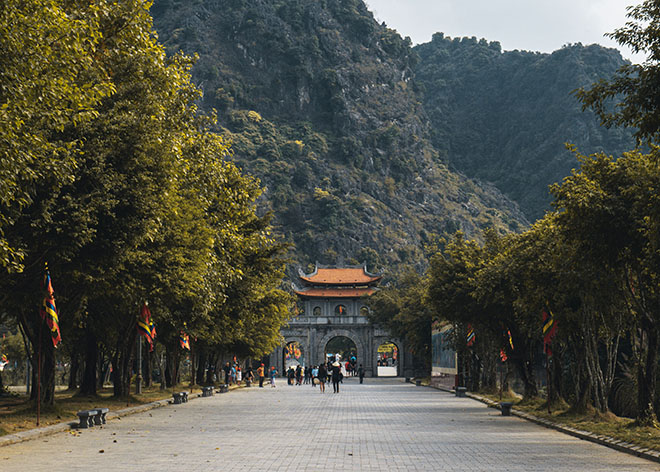
What to do?
– Joining a traditional festival: from March 8 to March 10 every year is the time for the traditional festival of Hoa Lu ancient capital to honor the kings and national heroes who built and developed the capital Hoa Lu. The festival of Hoa Lu ancient capital consists of 2 parts: the ceremony and the festival. Besides the ceremony, the festival with bold traditional games such as boat racing, wrestling, cheo singing … takes place in extremely jubilant and bustling atmosphere.
– Discovering vestiges of King Dinh temple and King Le temple: There are still two monuments here: King Dinh Temple and King Le Temple. These are two monuments built around the 17th century with extremely impressive and unique sculptures on stone wood. The road to King Dinh temple leads visitors under the canopy of poinciana trees along the way.
– In addition to the unique historical sites and landscapes, the delicious restaurants with idyllic culinary style of the Northern region are among the attractions for Hoa Lu Ninh Binh. Let’s take a look at the dishes that you must try when coming here:
“Com chay” (crust-burnt rice): A very famous specialty of Ninh Binh. Rice is uniform, crunchy, bright yellow color, served with a special sauce that makes visitors eat forever without feeling bored.
Mountain goat meat: Goat mountain in Ninh Binh is processed to make many attractive dishes such as lemon goats, steamed goats, spring rolls, goat’s blood, plum plastic … not only delicious but also extremely nutritious and good for health. .
Mountain snail: The tough, crispy, sweet snail meat is prepared in a variety of ways: steaming ginger, sauteed lemongrass, chili, salad
Dong Van old quarter (in Ha Giang province)
Different from the bustling old quarter of Hanoi or the peaceful old quarter of Hoi An, the old town where Ha Giang is extremely special due to its strange attractions of a mountainous area. Arriving here, you will have the opportunity to explore the geography, architecture, markets and unique old town cafes.
The old town was formed in the early 20th century, initially only a few number of the Hmong, the Tay and the Chinese families lived, evaluated more and more other local residents came. Overall, the old town bears a strong impression of Chinese architecture with two-storey houses with yin and yang tile roofs and red hanging lanterns.
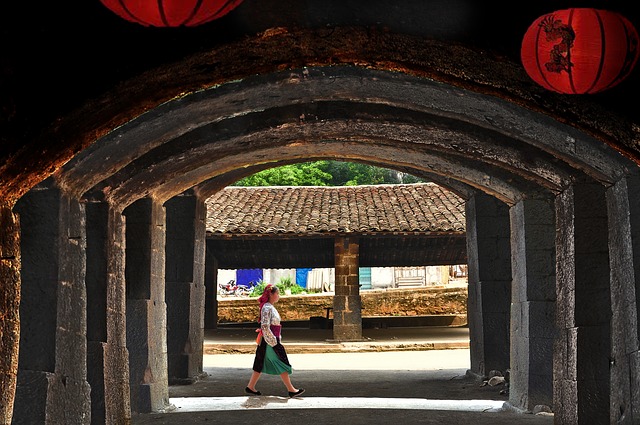
What to do?
– Strolling on the old streets and admiring the charming beauty of the Old Quarter: The picture of the old town is presented in many colors, changing with each time step in a day. In the morning, that unique painting is ingeniously blended by two vibrant yellow tones of sunshine and gray of old houses. Traveling to the ancient town of Dong Van, you will be immersed in a quiet space in the morning mist as awakened by the light, bustling sounds and colorful colors in costumes of the ethnic groups here.
– Visiting Dong Van café: As one of the few old houses still retaining the ancient beauty, “Old Quarter Coffee” is like an inviting bright spot. This was originally the home of a Tay landlords, very powerful in the ancient Dong Van region. This hundred-year-old house has also gone through many ups and downs along the old town, and fortunately remains almost intact.
– Go to Dong Van market: Dong Van Market is not only a place for exchanging goods among ethnic groups but also a place for making friends between the boys and the girls, or just simply a place to discover interesting things about people and culture of tourists when coming to Ha Giang. The girls with smiling faces with traditional costumes, unique souvenirs, attractive specialties, Ha Giang or beautiful brocade pieces, all of which will create an incredible experience for you.
Central Vietnam
Hoi An
Hoi An is believed to be an important Southeast Asian commercial port from the 15th to the 19th centuries.
In addition to the cultural values through diverse architecture, Hoi An also maintains a fairly intangible cultural foundation. Daily life of residents with customs, religious activities, folk art, cultural festivals along with poetic natural landscapes, specialty dishes, all of them makes Hoi An increasingly attractive guide travelers from almost everywhere.
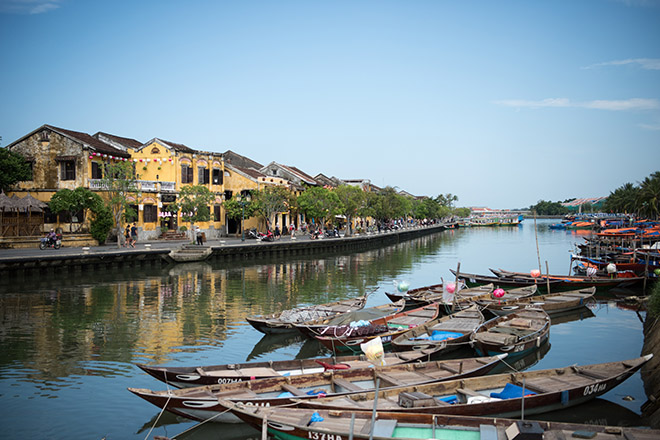
According to Hoi An statistics, there are 1360 relics including 1068 ancient houses, 11 ancient wells, 38 ethnic churches, 19 temples, 43 temples, 23 communal houses, 44 special ancient graves and a bridge.
Despite the movement of time and development of modern life, Hoi An ancient town retains the most ancient beauty. It is like a place where one can find a relic population preserved almost intact, making Hoi An a unique place in the annals of modern times.
Must-go destinations in Hoi An
– The hundreds year-old chairs years old pagodas: The pagodas built from the middle of the 17th century to the middle of the eighteenth century are one of the attractive destinations in the ancient town of Hoi An. That is Ba Pagoda, Ong Pagoda, Chuc Thanh Pagoda, Phuoc Lam Pagoda, Van Duc Pagoda, and Hai Tibet Pagoda.
– Cau bridge: what makes people most impressive is its strange architectural style that has become a symbol of Hoi An temples. Cau bridge was built in Japanese style but after repeated restoration, people realized that it was increasingly imbued with Vietnamese-Chinese culture.
– Chinese halls in Hoi An: Starting from Cau Pagoda, looking at the right hand, in turn, five Assembly Hall appear in sight: Chinese Assembly Hall, The Cantonese Assembly Hall, the Fujian Assembly Hall, the Chaozhou Assembly Hall, the Quynh Chau Assembly Hall represent the five major segments of the Chinese population here. Those were built majestically, extravagantly with elaborate decorations, wooden frames painted with gold veneer, fancy sculptures and colorful. It is a community place and also a way for Chinese people in Hoi An to remember their homeland.
>> Read More: Chinese’s hallmark in Hoi An
Hue Imperial palace
For nearly 400 years (1558-1945), Hue was the capital of the 9 Nguyen Lords in Dang Trong, the capital of the Tay Son Dynasty, and then the capital of the united nation under 13 Nguyen kings.
The ancient capital of Hue today still retains intangible cultural and heritages containing many values symbolizing the intellect and soul of the Vietnamese nation.
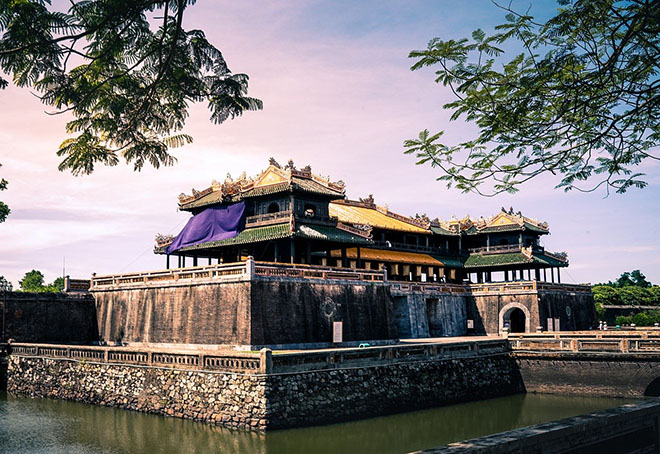
Throughout the centuries, many quintessentials of the country are gathered here to make a rich culture of identity to complete a wonderful natural landscape that displays poetic and romantic mountains and rivers. Therefore, when talking about Hue, people immediately think of citadels, golden palaces, magnificent temples and shrines, solemn mausoleums, and ancient landscapes
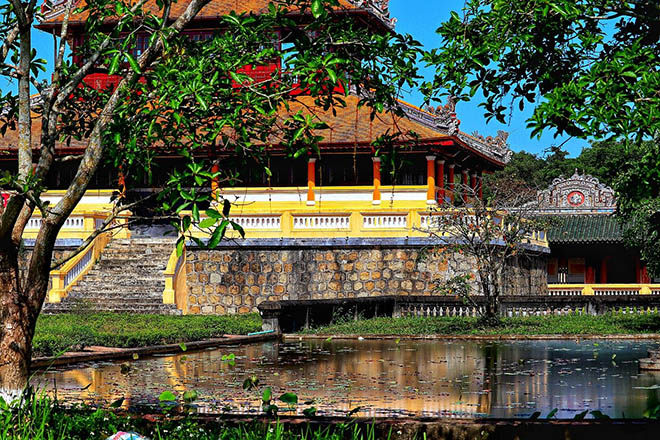
What to do?
– Discovering the architecture: Hue imperial architecture has absorbed and inherited the traditional architecture of Ly, Tran and Le dynasties and at the same time, absorb the quintessence of Chinese art Vietnamese. Especially, the technical modernization of the French constructors served under Gia Long’s time has been modernized according to the basic motto of selectively acquiring architectures adapted to the souls of Vietnamese and Vietnamese people.
– Try being a King: We don’t know where this bold and exciting idea came from but visitors coming to the Royal Palace truly have the opportunity to play the king, wear a royal cap, crown, sit on the throne with royal concubines, maidservant, and take some pictures to commemorate.
– Enjoy the royal dinner at Can Chanh court with dishes prepared and presented in the style of ancient Hue royal court and witness Hue performing arts, music and costumes.
>> Read more: A complete guide into the ancient Hue citadel
Southern Vietnam
Hundred-pillar house in Long An province
The hundred-pillar house, on the northwestern façade, is a sculpture style architecture with the style of Hue communist house in Long An still exists, keeping almost intact to this day.
It is the ingenious, meticulous style of realism in the classical framework combined with the liberal, graceful grace of the floral vines is the specific feature in the carving of the House of Hundred Pillars.
The exterior of the guest house is adorned by beautiful lacquer paintings, gilded with gold, which has revealed the intention of the homeowner to lead a prosperous and peaceful life, and at the same time, praise the beautiful scenery, blessing and longevity.
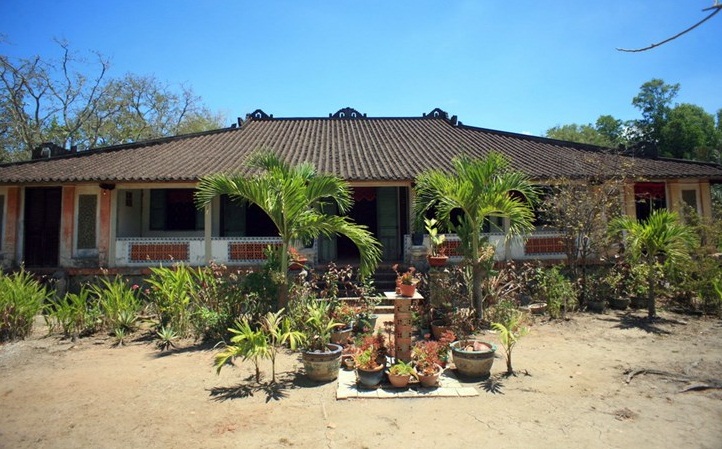
According to researchers, this is a Nguyen-style house, in general, with a clear imprint of Hue style. But due to the orders of the landlord in the context of the Southern French colonial period, there are many minor features in the theme of decoration, creating richness and diversity.
Experiencing many historical events, the unique features of the house have always been a living proof for a part of Southern history and culture of the late 19th century and early 20th century.
We hope that what we’ve just showed you will make you interested enough to set aside a little time in your schedule to come and witness the historical marks and ancient beauty in those places.
 Alida
AlidaA wanderlust who is into photography and has special interest in chasing clouds and admiring the sky. Hoping that someday I will be able to see the sky from every part of the world.




Comments